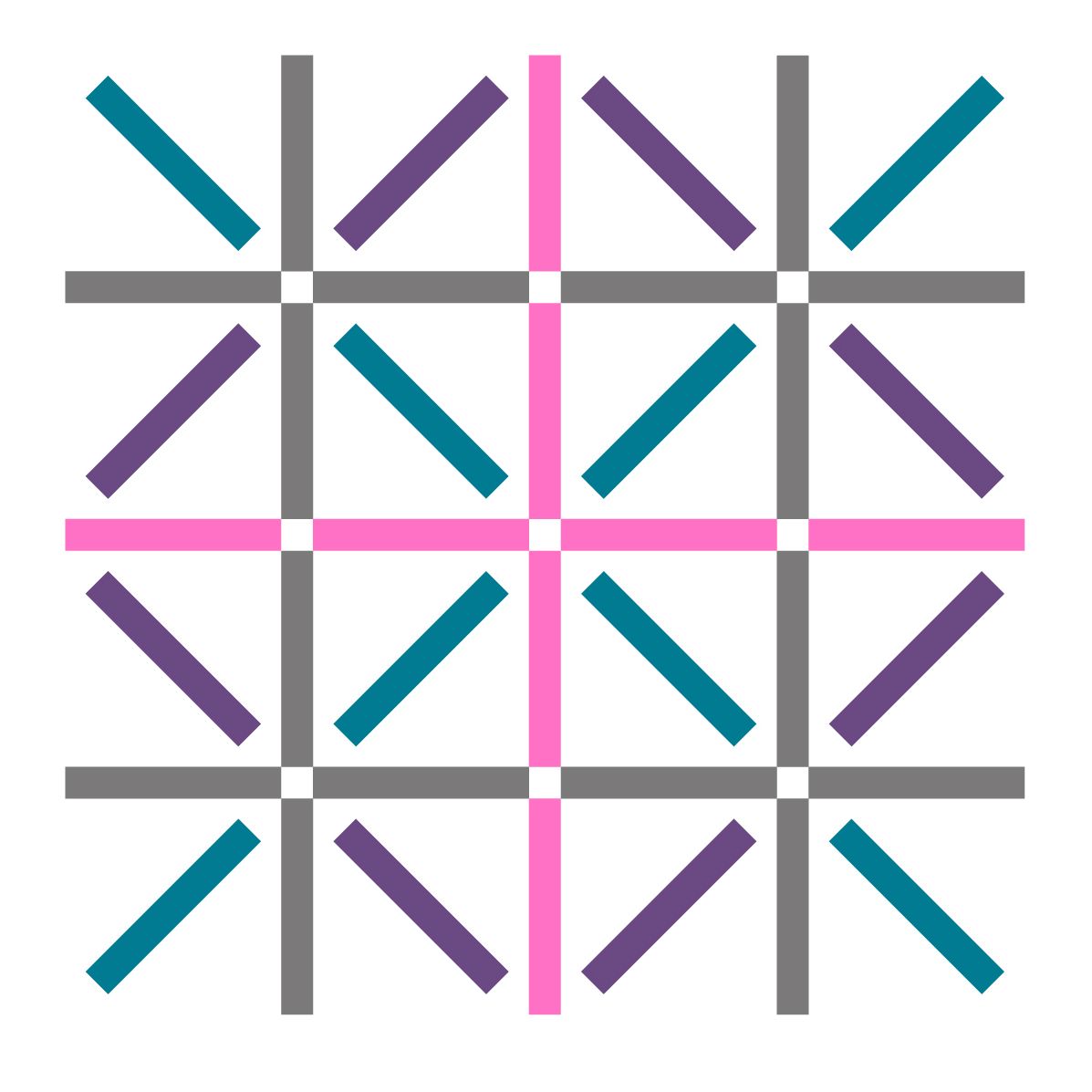This essay is part of a series on evaluating the designs of services. Taking the case of a healthcare system outsourcing its laundry operations, this first part introduces the concepts of net value, E-ratings and non-financial costs. It ends with a decision to make.
Not all contracts are services, but all services are contracts. Good services keep customers and service providers happy at the same time. From the customer’s perspective, the service may disappoint because the quality of outcomes and experiences are lower than expected; or the price too high. Any of those three reasons may the net value customers enjoy. Providers may feel the same based on their own net value calculations. Even if customer needs are not difficult to meet, the actual instances of demand may be too costly to serve. Artifacts and events that customers present, may be hard to handle. Users may be difficult to take care of and service agents feel stress. Therefore, while the price may be too high for customers, it may not be high enough from the provider’s perspective. Low net values create tensions between customers and providers, along the lines of outcomes, experiences, and price. A little bit is of tension is alright, but too much of it can be a problem. Let's understand the tensions, taking the case of a healthcare system outsourcing its laundry operations.
The customer
UHG is a healthcare system with several hospitals caring for a large population. They are a privately-owned for-profit organisation but with a founding philosophy that allows them to worry less about their financial bottom line than they would otherwise have to. But that doesn’t mean they do not have to be mindful about their operating costs. It simply means, their stakeholders care about environmental and social impacts. Their business practices reflect that. They take care of their employees as they take care of their patients. They are also known to treat their suppliers well. They believe a business ecosystem such as theirs, will be healthier if suppliers make healthy profits. They are systems thinkers to the core and are not afraid to experiment now, to develop practices of the future. All this in an industry subject to strict standards and regulations.

The cleaning and sterilisation of linen is critical to caregiving operations throughout the healthcare system. Staff and patients make use scrubs, gowns, and sheets, every single day. In the healthcare setting, linens get heavily soiled from even normal use. They need to be frequently changed to avoid infections, diseases and discomfort. Each hospital creates a large daily load for laundry that must be promptly washed to replenish stocks of clean linen, but also to avoid unhygienic piles from accumulating on premises. Thus far, it had made sense for UHG to wash its own laundry. An internal unit called WMC, has effectively run the operation. They knew the wash loads well because of being an integral part of the UHG caregiving operation.

The decision to outsource
But the system had grown and added many more locations after acquiring a few independent hospitals. That has also meant offering wider range of services and significantly more points of care at which linen at which linens get soiled. There have also been a few operational failures that luckily didn't result in any hospitalisations or fatalities, as they unfortunately did in the children's hospital case in New Orleans. An internal audit led senior leaders at UHG to believe, it may be necessary to outsource the laundry function. UHG had grown too much and WMC might struggle in the future to keep its promises to patients and staff across the system.

Major investments would be necessary to keep up with the growth, including technological upgrades, additional space on prime real estate, and hiring more staff. That would still not solve the logistical problem of having to cover more locations than before. They would also have to expand the pick up and delivery operation with more drivers and vehicles. Therefore, the board decided to invest instead in a long-term relationship with a local service provider who can take over the responsibility from WMC. The unit would retain accountability for the overall safety and comfort of staff and patients through the promise of adequate stocks of clean linen in every UHG closet.

The evaluation method
The hospital hires QUO, a consulting firm specialising in the design of service contracts. QUO is know for developing new ideas for measuring and evaluating intangible things such as net value. They help their clients design contracts that pay off well for customers and service providers. That rang well with the hospital’s policy of taking care of its suppliers and including them in its long-term visions. QUO-designed contracts also try and maintain the same levels of transparency and trust between customers and service providers, that exist between the internal units of an organisation. The agency conducts an evaluation to determine what UHG has been spending on taking care of the linen, and how much it would be willing to pay a service provider capable of taking over the operation. QUO uses a unit of measure called HEX that combines the qualities of outcomes and experiences with the quality of price or payments. The idea is, experiences are cost coefficients and therefore crucial determinants of net value. It helps avoid decisions based purely on price.
The cleaning and sterilisation of linen is worth 12000 HEX to the UHG mission. WMC gets the done on a monthly budget of 10000 HEX. But the true cost of getting the job done is 11111, after accounting for waste and overheads. How much then would an outside service provider charge? Given the economies of scale and scope commercial service providers tend to develop, and their greater tolerance for enterprising risk, they could offer to do the job cheaper and probably better. At least, that's the premise of outsourcing. External offers would have to be significantly lower than the internal option due to transaction costs. Transaction costs include all the costs incurred in setting up the contract, achieving steady state operations, evaluating outcomes and experiences, contract administration, managing disputes, and enforcing agreements. Those are the costs of taking an activity or process, splitting it into demand and supply, and
Therefore, upon QUO’s recommendation, UHG decides to be open to all offers that promise a net value of at least 1000 HEX in terms of the mission impact. Three service providers, X, Y, and Z, respond to the UHG request for proposals, with the following offers to get the job done:
X, for 10000 HEX
Y, for 11500 HEX
Z, for 9000 HEX
The offers from Z and X compare favourably against the internal benchmark. Y is more expensive. Which offer should UHG consider to be the best and why? This is where QUO applies a novel equation for determining net value.
The balancing equation
With any service in general, the net value for customers is higher when the qualities of outcomes and experiences are higher, and the price is lower. The problem is, the price falls below a threshold, the quality of outcomes and experiences also fall. That's because service providers have to incur costs in producing outcomes and experiences.
Net value = outcomes – (price/experience)
N is the net value.
O is for the quality of outcomes.
P is the price, factoring in the time value of the money.
E is the quality of experiences for users, as the ratio of ease over effort.
O = (gains + avoided losses) * probability
P = (cost + fees) * timing
E = ease/effort
N = O-P/E
For UHG, as the customer, the gains would be in terms of hospital staff and patients feeling more comfortable in their gowns, sheets, and scrubs from the linen being clean and fresh more of the time. The avoided losses could be in terms of feelings of discomfort, infections, and delays in providing care. The probability of all that happening depends on how well the laundry cleans and sterilises the linen and how quickly and completely they replenish the stocks, within the windows defined by the caregiving. The probability is lower if the cleaning or sterilisation are not properly done, or if stocks of clean linen are not there when and where needed. Cost corresponds to the spending for getting the job done in-house. The fees are the financial reward for someone else to do the job after assuming all the risks involved. Timing factors in the time value of money and the discounting of cash flows, derived from the terms and conditions for payments.
Ease is a factor of user experience that accounts for all the things hospital staff do not have to do, because the laundry's staff will do it for them, such as removing soiled linens, replacing them with fresh stocks, and placing them where most needed. Ease includes the time the hospital staff do not have to spend waiting. In contrast, effort accounts for the things they must do for the laundry staff to do effectively their jobs. For example, nurses are the first ones to notice when a patients and beds need fresh linen. They then have to remove the soiled linen and place them in designated areas or bins. If that does not happen, then the laundry cannot do much. If particular shift or ward has an unusually high load, then someone on the hospital staff may have to notify the laundry about the need for additional stocks before the next replenishment.

Reasonable expectations
The bidders of course have their own expectations of net value, between upper and lower thresholds of "wow" and "not OK". Apart from covering their costs, they have to care about making enough gains think of making long-term investments the help grow and sustain a business. Their avoided losses would be idle capacities of workforce, buildings, plant and equipment. Long-term contracts with steady wash loads that provide stable cash flows, such as the one with UHG is offering, are attractive to them. The cash flows define the O numbers for services providers. Their internal costs define their P numbers, along with the fees of their suppliers. The ease and effort in delivering and support the service, define their E numbers. How easy will customers and users make it for them to do everything that must be done and provide things? What additional burdens might they have to bear? What unusual expectations might users have of them? Answers to such questions have an impact on a provider's net value.

Both customers and providers would like their N value to be as high as possible. But there could be a tension between the two values. For customers, the P number represents what they are paying for the service. The P number for customers determines the O number for the service providers. Which means providers don’t mind customers accepting a higher P number and returning them a higher O and N. The price can’t be too high, for then, that can push the N for customers below a threshold. Price can’t be too low either, otherwise it could affect the provider’s chances of recovering costs and covering obligations to employees, suppliers, governments, and financial institutions. Financial stress can lead to operational failures and the service can fall short of expectations. Customers like UHG don’t want that, wary of the risk to their own operations. This is where the E number plays an important role in reducing the tension.
E-ratings
In the QUO model, both, customers and service providers receive E-ratings based on an initial assessment, industry benchmarks and historical data. The better the rating, the better the quality of the experience for the other side. For a given set of values of O and P, the N value for customers will be good if providers have a high E rating. Similarly, the net value for providers will be good when customers have a high E rating. There are three possibilities:
E > 1.0
E = 1.o
E < 1.0
P/E, or P divided by E is a measure of financial and non-financial pain. For any given value of P, when E < 1.0, then P/E is more than P. That means E has the effect of a penalty. That's not good. When E > 1.0, then P/E is less than P. That means E has the effect of a discount. That's not bad. When E = 1.0, then P/E equals to P. That's the centre point of industry expectations and the inflection point between good and bad.
When E < 1.0, there is usually a shifting of burden from one side to the other. Service contracts often have terms and conditions that knowingly and unknowingly do that. Service providers insist on things that make it harder for customers to quickly and conveniently make use of the service. Similarly, customers insist on things that make it harder for service providers to deliver and support the service. Both sides suffer such needless aggravations. Both sides 'compensate and correct' through the P numbers their negotiate. Whereas, through mutual understanding, cooperation, and trust, the parties can design a contract that is mutually beneficial, and collectively good.
Bid comparison
Getting back to the offers the table from X, Y, and Z, according to the analysis and research done by QUO, the E-ratings are as follows:
X, 0.95
Y, 1.05
Z, 0.85
To make the evaluation and comparison of the bids, both, meaningful and fair, QUO has given WMC a rating of 0.9, to serve as the benchmark. QUO analysts calculate that number based on several interviews with the management and staff of the UHG system. The reference rating compares favourably with Z, whereas X and Y have a higher rating. It is decided that the enterprise that takes over from WMC, should promise a net value of at least 1000 HEX. Applying the formula, QUO presents the following calculations:
X’s offer,
O = 12000, E = 0.95, P = 10000
[Offering same O and P as WMC, but a better E]
N = 12000 - 10000/0.95
N = 1474 HEX
Y’s offer,
O = 12500, E = 1.05, P = 11500
[Offering better O and E than WMC, but a higher P]
N = 12500 - 11500/1.05
N = 1548 HEX
Z’s offer,
O = 11500, E = 0.85, P = 9000
[Offering worse O and E than WMC, but a lower P]
N = 11500 - 9000/0.85
N = 912 HEX
DIY option,
O = 12000, E = 0.90, P = 10000
N = 12000 - 10000/0.90
N = 889 HEX
On price alone, Z is cheaper than WMC. However, after factoring in the quality of outcomes and experiences, the bids from X and Y are more attractive. Both have the promise to do better than the in-house operation. Z has a lower O than others because do not offer the exchange cart delivery option. That means there could be smaller stocks of fresh linens, when things get suddenly busy. Nurses and physicians, who are always on their feet, love the idea of being able to grab and go from several strategically located mobile carts. WMC does not offer exchange carts either. But they are deeply integrated into the UHG system. With authorised access to all buildings and areas, WMC staff can quickly make fresh stacks happen, or move stocks from here to there, as and when necessary.
So, it's down to X and Y. They are both well above the 1000 HEX threshold in terms of net value. Which one of them should QUO and WMX recommend to the UHG management? Should go with Y for having the highest score? Or should they consider X for promising to expose burden them with a lower price tag? The difference is in the E ratings and the associated non-financial considerations. This is where belief and confidence matter. Essentially, Y is asking for a higher price but promising that the hospital staff will have a much better experience when using the service. X is betting that the users will be happy if the quality is even slightly better than what they are presently used to, with WMC.
In the concluding part of this series, covers the decision UHG makes, the reasoning behind the decision, and the analysis of the results several years later. But, based on your experience what do you think?
You can play with this simple tool for assessing net value and comparing bids. The initial code for this tool was generated by the Anthropic Claude AI system, after reading this essay. The tool will show how the net value equation can be useful as pump your intuition.
This photo essay is based on case study that appears in Chapter 8 of my book, Thinking in Services. It has been edited for brevity and illustrated with photographs.









